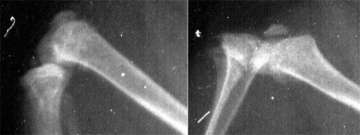Osteoarthritis
Osteoarthritis (OA) is the leading cause of long-term disability in the U.S. OA causes the cushioning cartilage on the surfaces of bones at joints to wear away. As the disease gets worse, the cartilage disappears and bone rubs on bone, leading to restricted mobility and considerable pain. Bony spurs usually form around the joint, further restricting mobility and increasing pain. For the most part, the causes of OA are unknown. It is mainly related to aging, but metabolic, genetic, chemical, and mechanical factors can also lead to OA. OA currently affects nearly 27 million people in the United States, where it accounts for 25% of visits to primary care physicians. The incidence of OA in the United States is increasing. It is currently estimated that 80% of the US population will have radiographic evidence of OA by age 65*. No cures are yet available to generate or regenerate normal articular cartilage. Hence, there is an urgent and growing need for treatments that can repair articular cartilage. Understanding the molecular mechanisms underlying the formation and maintenance of chondrocytes is of paramount importance for the development of strategies that prevent or treat this increasingly prevalent disease.
*United States Bone and Joint Decade: The Burden of Musculoskeletal Diseases in the United States: Prevalence, Societal, and Economic Cost. Rosemont, IL. American Academy of Orthoapedic Surgeons, 2008. www.usbjd.org >
